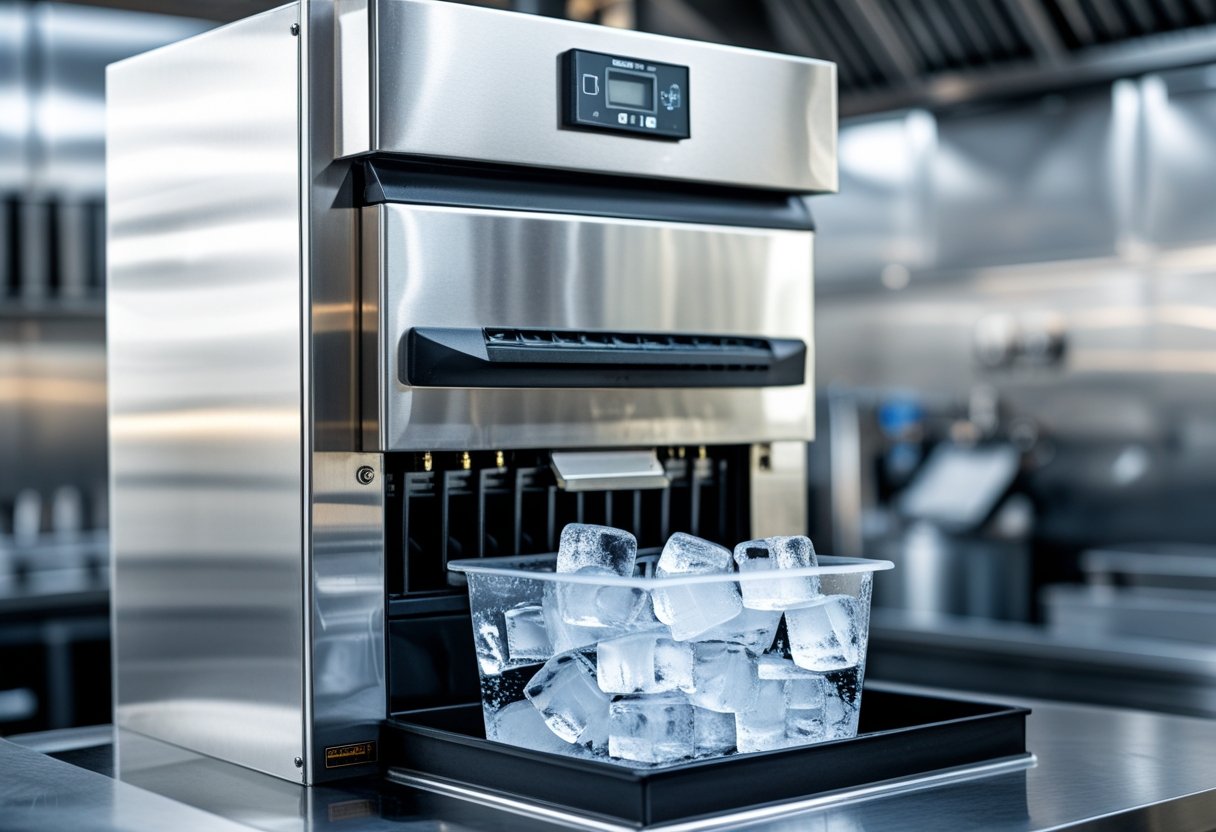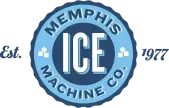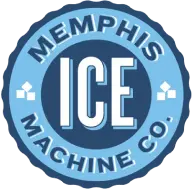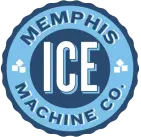proudly serving
the mid-south
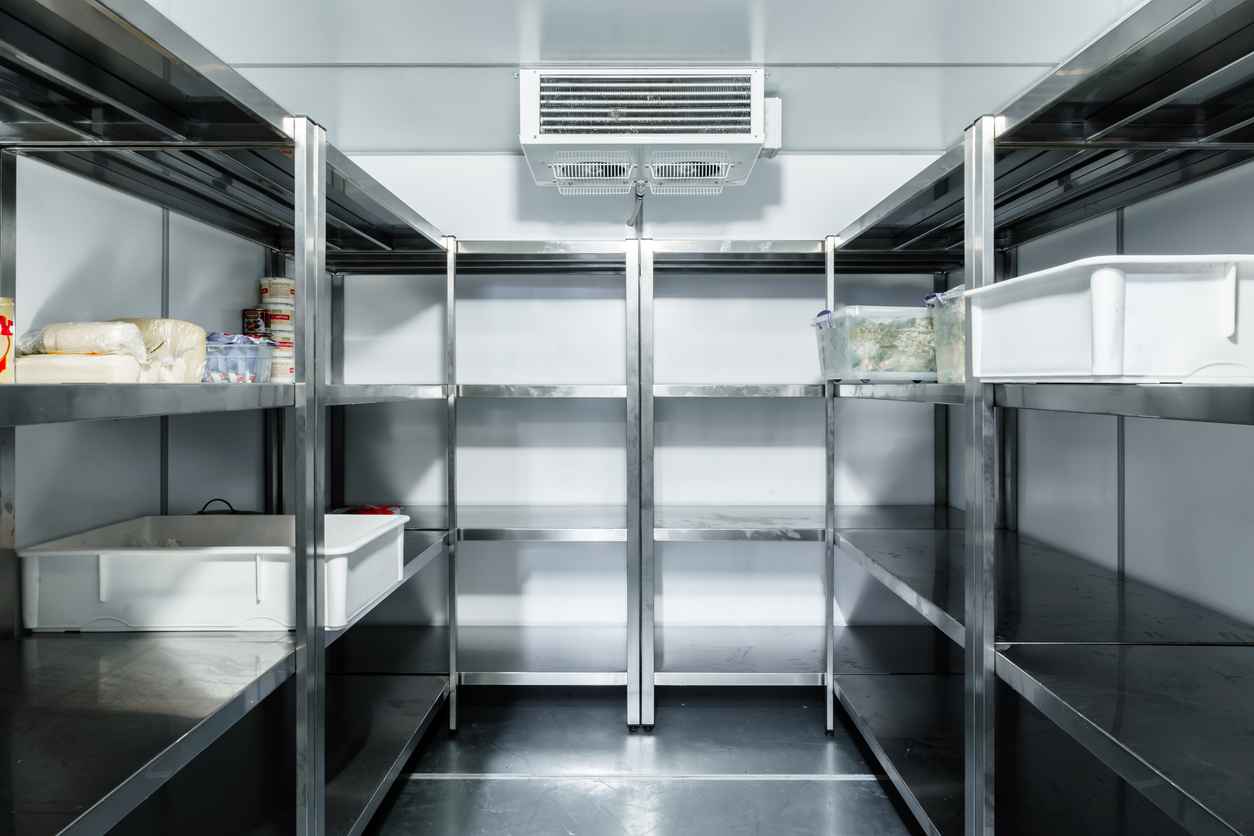
Walk-In Cooler Maintenance Tips for Easy and Effective Cooling
A dependable walk-in cooler isn’t a luxury—it’s a necessity for your business. Keeping it in good shape helps you avoid expensive repairs and keeps your products fresh. Regular maintenance is the best way to make sure your walk-in cooler runs efficiently and lasts longer.
Simple steps like cleaning coils, checking door seals, and getting the compressor serviced can make a real difference. At Memphis Ice, we’ve been helping the Mid-South stay cool since 1977, so we know a thing or two about keeping things running.
Taking care of your cooler means fewer headaches and less downtime. With the right tips and a bit of expert help, you’ll keep your walk-in cooler humming along all year.
Understanding Your Walk-In Cooler
Understanding how your walk-in cooler works helps you take better care of it. You’ll get familiar with its main parts, how it keeps food safe at the right temperature, and the types you might see in your business.
Key Components Overview
A walk-in cooler has a few main parts that all team up to keep things cold. The compressor pumps refrigerant through the system. The evaporator coil pulls heat from inside the cooler. The condenser coil releases that heat outside.
Insulation in the walls keeps cold air in and warm air out. Door seals stop air leaks—super important for efficiency. If any of these go bad, your cooler might not stay cold enough.
How Temperature Control Works
Your walk-in cooler uses a thermostat to hold a steady temperature. The thermostat senses the air inside and tells the compressor when to turn on or off. If the temperature creeps up, the compressor kicks in and cools things down.
Fans move cold air around to keep the temperature even. Too warm, and bacteria can grow. Too cold, and you risk freezer burn. Set the thermostat right and check it often—it’s a simple way to keep things safe.
Common Walk-In Cooler Types
There are a few types of walk-in coolers out there. Panel systems use insulated panels you assemble on-site—great for big spaces.
Pre-fabricated coolers come as one piece and are easy to install but not super customizable.
There’s also the modular cooler, which blends features of both. Knowing your cooler’s type helps you follow the right maintenance routine.
If you need repairs or service, Memphis Ice has your back across the Mid-South.
Daily Walk-In Cooler Maintenance Tips
Keeping your walk-in cooler in shape takes a little attention every day. Spot problems early, keep things clean, and make sure the door seals work. These small habits protect your food and your equipment.
Visual Inspections
Every day, give your cooler a quick look. Listen for odd noises from the compressor or fans—those could mean trouble. Check for frost on walls or floors, since that hurts efficiency.
Make sure the lights work, and shelves or racks aren’t wobbly. Broken shelves can cause spills or even injuries. Watch for leaks or puddles on the floor; those can be slip hazards or damage equipment.
A daily glance helps you catch little issues before they turn into big, expensive ones.
Cleaning Spills Promptly
Spills are bound to happen, but cleaning them up fast keeps people safe and stops bad smells from starting. Grab a mop or towel and dry up any liquids right away.
Clear food debris from shelves or corners every day. Leftover crumbs invite mold and pests, which nobody wants in their cooler.
Stick with mild cleaners made for refrigeration. Harsh chemicals can mess up surfaces or even your stored food. Keeping things dry and tidy keeps your inventory safer and your space nicer.
Checking Door Seals
Door seals are your cooler’s first line of defense. Every day, run your hand along the door edges to feel for leaks. If you find cracks or gaps, it’s time to repair or replace the seals.
Swap out worn gaskets quickly to avoid wasting energy and risking spoiled food. Try closing the door on a piece of paper—if it slips out easily, your seal isn’t tight.
Good seals mean less wasted energy and better food safety. If you need help, Memphis Ice is just a call away.
Weekly Maintenance Routines
Weekly checks keep your walk-in cooler running its best. Focus on the thermostat and the coils to avoid big repair bills and keep your inventory safe.
Monitoring Thermostat Settings
Your thermostat keeps your inventory at the right temperature. Check it every week to make sure it matches what you need. If you see sudden changes, something might be off.
Write down the temperature each week to spot trends. If it shifts by more than 2°F, call a pro. Test temperatures in different spots inside the cooler—sometimes cold air doesn’t spread evenly.
Keep the settings steady. Changing them too often just makes your system work harder. If your cooler is near heat or gets lots of door traffic, keep an eye out for temperature swings.
Inspecting Evaporator and Condenser Coils
Dirty coils make your cooler work overtime and can lead to breakdowns. Check the evaporator and condenser coils every week for dust, dirt, or ice. Use a soft brush or cloth to gently wipe them down.
If you see frost or ice on the evaporator coil, defrost it right away. Ice cuts cooling power and strains the system. For condenser coils, clear away leaves or trash to keep the air moving.
Clean coils save energy and help your equipment last longer. Memphis Ice can help with regular coil care if you need an extra hand.
Maintaining Optimal Temperature
Keeping your walk-in cooler at the right temperature protects your inventory and saves money. The right settings and not overstuffing the cooler both help keep things steady.
Setting the Right Temperature
Aim for 36°F to 38°F. That’s the sweet spot to keep food safe—cold enough to slow bacteria, but not so cold you get freezer burn.
Check the thermostat often to make sure it’s accurate. Even a few degrees off can mess with food safety and drive up energy bills. Digital thermostats are more precise and easier to read.
Try not to change the temperature too often. Let the system do its thing. Memphis Ice suggests seasonal checks to tweak settings as it gets hotter or colder outside.
Preventing Overloading
Stuffing your cooler too full blocks air and causes uneven cooling. Leave some space between items so cold air can move around.
Don’t stack heavy things near door seals—it can crush the seal and let warm air in. That just makes your cooler work harder.
Use shelves to organize and rotate stock so things don’t pile up. If you’re running out of space or business is booming, maybe it’s time to upgrade your cooler or add exhaust fans.
Memphis Ice offers custom maintenance plans for Mid-South businesses to keep your walk-in cooler in top shape.
Cleaning and Sanitizing Procedures
A clean walk-in cooler keeps your products safe and the system running well. Use the right cleaning products and methods to clean floors and walls without damaging anything or leaving residue.
Recommended Cleaning Products
Pick cleaners that get rid of dirt, grease, and mold but won’t harm stainless steel or insulation.
- Go for non-abrasive, food-safe cleaners on shelves, walls, and gaskets.
- Skip harsh stuff like bleach or ammonia—they’ll corrode metal and ruin seals.
- Mild detergent with warm water works for most jobs.
- For tough spots, a bit of vinegar in water can help without leaving strong smells.
- Rinse cleaning agents off completely to prevent buildup.
Double-check product labels to make sure they’re safe for commercial refrigeration. The right cleaner protects your cooler and your team.
Proper Floor and Wall Cleaning
Floors and walls pick up dirt, spills, and condensation. Clean them often to prevent mold and slips.
- Sweep or vacuum before mopping.
- Use a mop and warm, soapy water for the floor.
- Don’t soak the floor—use a damp mop so it dries fast.
- Wipe walls with a soft cloth or sponge in your cleaning solution.
- Get into corners and around door thresholds.
- Dry everything well after cleaning to avoid moisture damage.
Regular cleaning keeps your cooler safer and helps cut down on repairs or bad smells. For busy Memphis businesses, these habits really do pay off.
Preventing Mold and Odors
Keeping mold and odors away means watching airflow and tossing old food fast. These steps help stop dampness and the stuff that causes smells and mold growth.
Ensuring Air Circulation
Good airflow keeps moisture from building up on walls and shelves. Make sure fans aren’t blocked by boxes or pallets.
Keep vents open and don’t overload the cooler. Crowding cuts off air and creates cold, damp spots where mold can grow.
Check door seals often to keep out humid air. Even tiny gaps let moisture in, raising the risk of mold and odors.
A clean evaporator coil helps keep air moving. Memphis Ice recommends regular coil cleaning for efficient cooling.
Removing Perishables Promptly
Spoiled food is a huge source of odors and mold. Check inventory often and toss anything expired right away.
Keep perishables in sealed containers to prevent spills and leaks that feed mold. Clear, labeled bins make it easier to stay organized.
Clean up spills fast to stop bacteria from spreading. Use approved cleaners that don’t leave strong smells.
Staying on top of cleaning and tossing old food keeps your cooler fresher. We’ve seen regular care make a big difference.
Energy Efficiency Best Practices
Running your walk-in cooler efficiently saves energy and money. A few tweaks in how you use the door and organize items can have a real impact.
Managing Door Usage
Try to keep door openings quick and infrequent. Every time the door opens, warm air rushes in, and your cooler has to work harder. That burns more energy and wears out parts.
Remind staff to plan ahead and grab what they need in one trip. Use strip curtains or automatic closers to cut down on cold air loss.
Check door seals regularly. If they’re worn, replace them. A tight door saves energy and keeps the temperature steady.
Proper Storage Organization
Organize your cooler so air can move around. Don’t jam shelves full or stack boxes against walls or vents. Blocked airflow means your cooler works harder and runs up your bills.
Put things you use a lot near the door to cut down on open-door time. Group similar items together and label shelves so everyone can find things fast.
Keep items a few inches away from the back wall for better airflow. Smart storage helps your cooler hold even temperatures and saves energy.
Memphis Ice has been helping businesses stay cool since 1977, and these tips really do help protect your investment and lower your bills.
Troubleshooting Common Walk-In Cooler Problems
When your walk-in cooler starts acting up, you’ll usually notice things like temperature changes or weird noises. Knowing what these signs mean can help you jump on the fix before it turns into something bigger.
Identifying Temperature Fluctuations
If you notice the temperature inside your cooler jumping up or down, it might be something as simple as a dirty condenser coil or a thermostat that’s not doing its job. When dust collects on the coils, your system has to work harder, and cooling just isn’t as effective.
Check the door seals—are they actually tight? Worn or cracked seals let cold air slip out and let warm air sneak in, which makes things unpredictable inside. And don’t forget about how much you’re packing in there. Overloading blocks airflow and leads to uneven cooling.
Keep a reliable thermometer handy and keep an eye on the temperature. If it keeps drifting out of the recommended range, it’s probably time to call someone who knows what they’re doing. Memphis Ice suggests getting routine checks to dodge these headaches.
Detecting Unusual Noises
If your cooler starts making odd noises, something’s probably not right under the hood. A loud buzzing or humming? That’s often a sign the compressor or fan motor is struggling. You need those parts in good shape for things to run smoothly.
Hear clicking or rattling? Could be a loose screw or maybe something got stuck inside. Try to figure out where the noise comes from.
When new sounds pop up, go ahead and turn off the unit. Take a quick look for anything obvious—loose panels, ice where it shouldn’t be, that sort of thing. Brushing off weird noises usually leads to bigger, pricier repairs later. Memphis Ice folks say it’s best to tackle noise problems early, so you don’t end up with a silent (and broken) cooler.
Scheduling Professional Walk-In Cooler Maintenance
You really want your walk-in cooler to just work, especially when things get busy. Regular professional maintenance can catch small issues before they turn into wallet-draining repairs. It also helps your cooler run better and keeps your products safe.
At Memphis Ice, we usually recommend setting up a maintenance plan that fits your business’s routine. These plans might include compressor checks, cleaning, and parts inspections. Regular visits help your equipment last longer and help you avoid those dreaded surprise breakdowns.
Here’s what you can expect from a typical maintenance visit:
- Cleaning and checking condenser coils
- Making sure refrigerant levels and the compressor are good
- Testing door seals and gaskets for leaks
- Watching for temperature consistency
How often should you get these checkups? It depends on how much you use your cooler and where it lives. A busy restaurant might want service every few months, while a place with less traffic could get by with twice a year.
Try to schedule maintenance before the weather heats up or your busiest season starts. That way, your system’s ready when you need it most. Memphis Ice has been helping Mid-South businesses since 1977, so you can focus on your business instead of stressing over the cooler.
If you’re not sure where to start, just talk to an expert. They’ll help you figure out a plan that actually works for you.
Frequently Asked Questions
If you want your walk-in cooler to last, check the important parts regularly and know when to call in backup. A few simple habits can save you cash and keep your stock safe.
What routine checks should I perform on my walk-in cooler?
Every week, check that the door seals close tight. Look at the inside temperature daily. Once a month, clear dust and debris from the condenser coils to keep things running smoothly.
How often should I schedule professional maintenance for my walk-in cooler?
Twice a year is a good rule of thumb. Book a service before summer hits so your cooler can handle the rush and avoid breakdowns. Memphis Ice recommends regular tune-ups to help your equipment last longer.
Can you suggest a comprehensive checklist for refrigeration maintenance?
Here’s a solid checklist:
- Clean condenser coils
- Check refrigerant levels
- Inspect door gaskets
- Test thermostat accuracy
- Clean evaporator fans
- Listen for weird noises or look for leaks
- Make sure drainage is working
What are some common walk-in cooler issues that I can prevent with regular upkeep?
You can stop problems like leaky door seals, frost buildup, dirty coils, and weak fans just by keeping up with maintenance. These issues mess with efficiency and can cause temperature swings that put your goods at risk.
What signs indicate that my walk-in cooler may need immediate repair?
If your cooler isn’t staying cold, starts making strange noises, you see water pooling up, or smell something burning, it’s time to call a technician. Don’t wait—these warning signs can quickly turn into major headaches.
Which parts of my walk-in cooler should I pay special attention to during maintenance?
Keep an eye on door gaskets, condenser and evaporator coils, fans, and the thermostat. These parts tend to wear out eventually and really impact how your cooler runs. Memphis Ice experts usually recommend staying on top of maintenance here—no one wants surprise repairs, right?
Recent News

Ice & Oktoberfest: The Role of Ice in Beer, Cocktails, and Celebrations
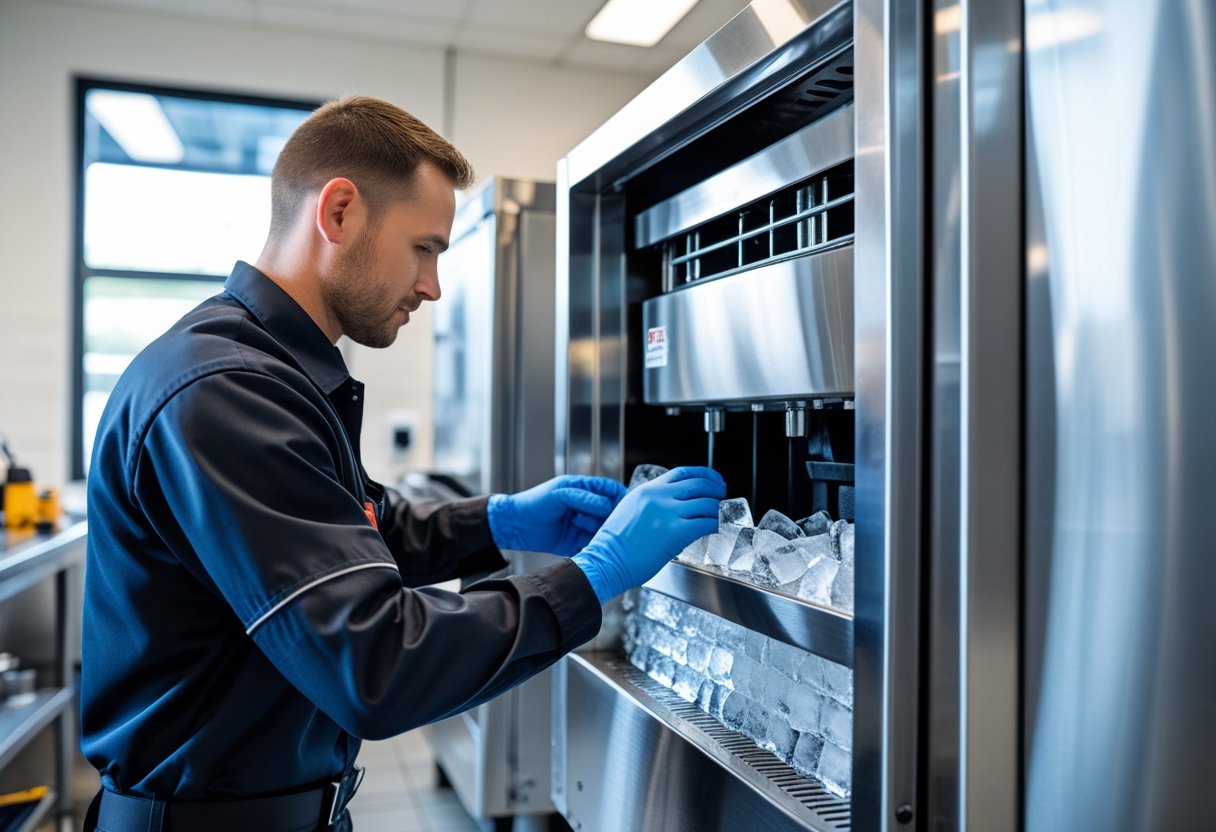
Signs Your Ice Machine Needs a Service to Keep Ice Fresh and Reliable
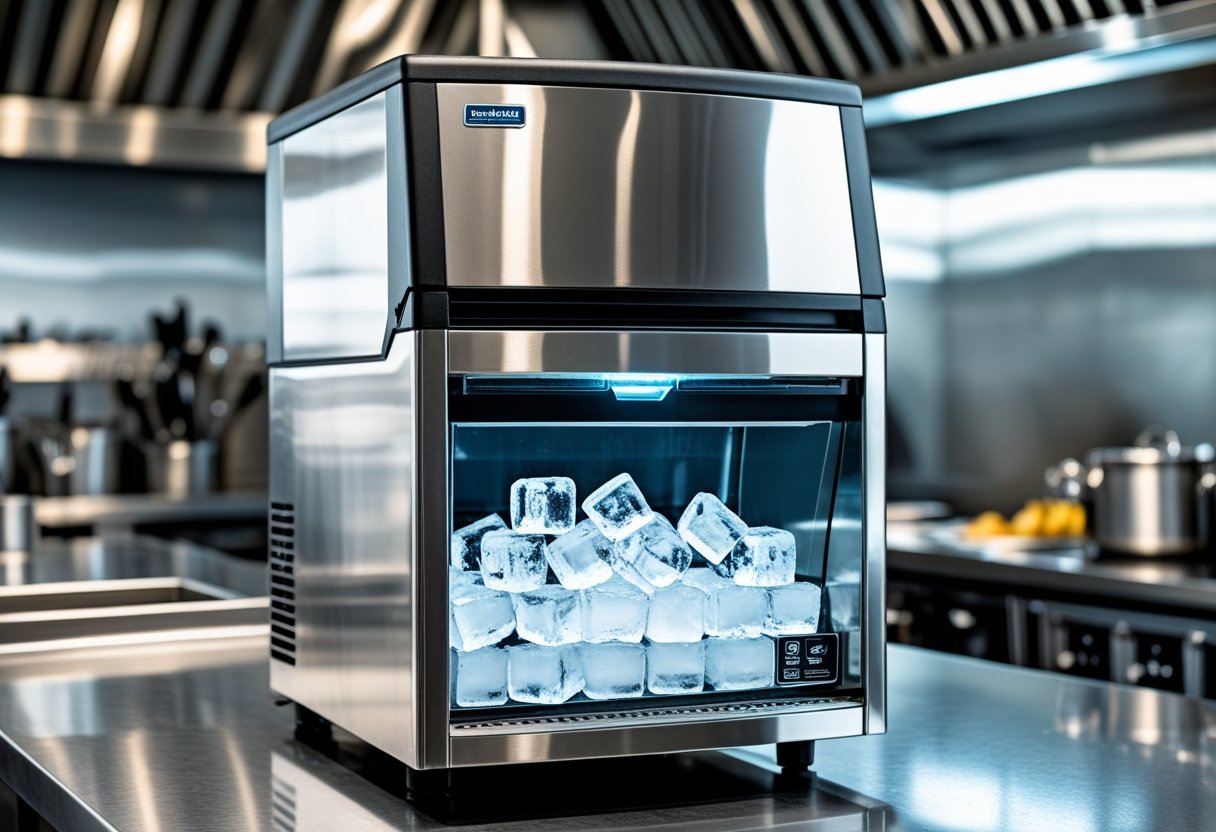
Restaurant Ice Machine Not Working Troubleshooting Tips Made Easy
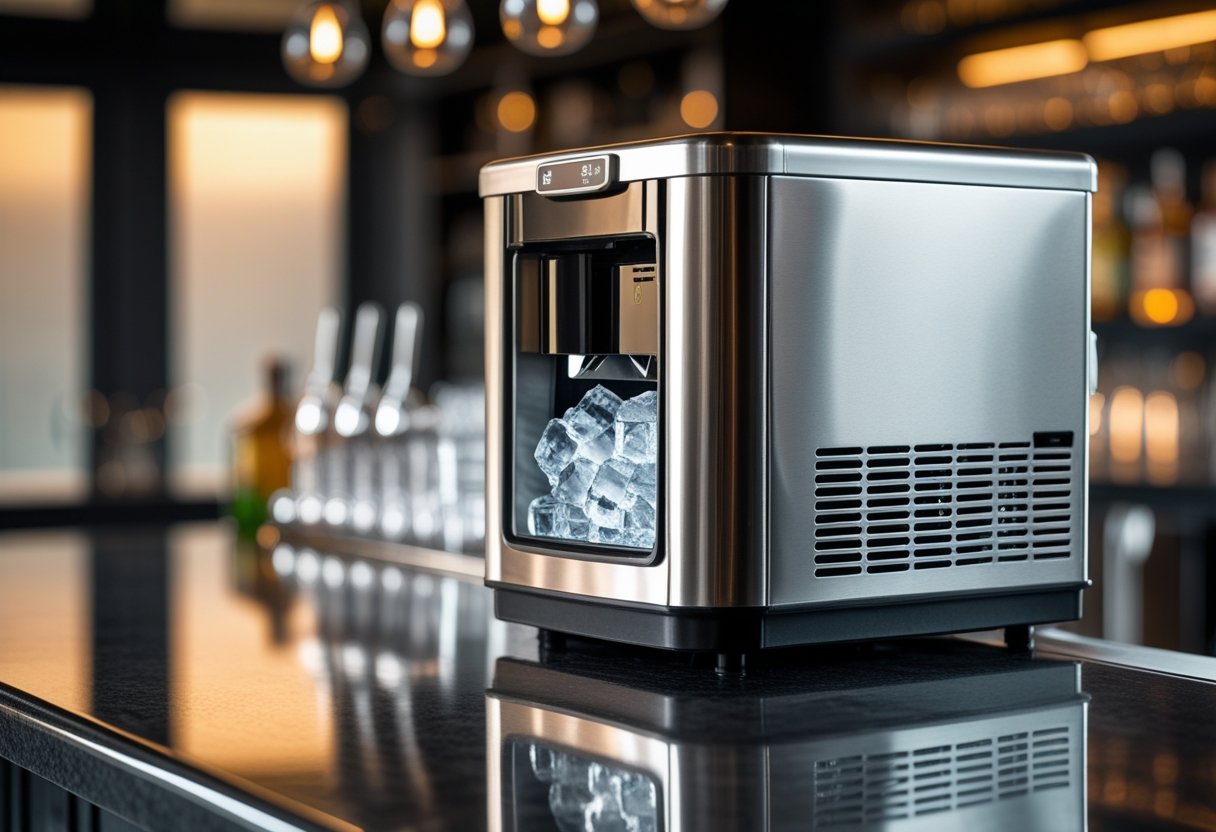
Preventative Maintenance for Ice Machines Tips to Keep Ice Fresh and Machines Running Smoothly

Bar Equipment Refrigeration Guide Tips for Keeping Drinks Perfectly Chilled
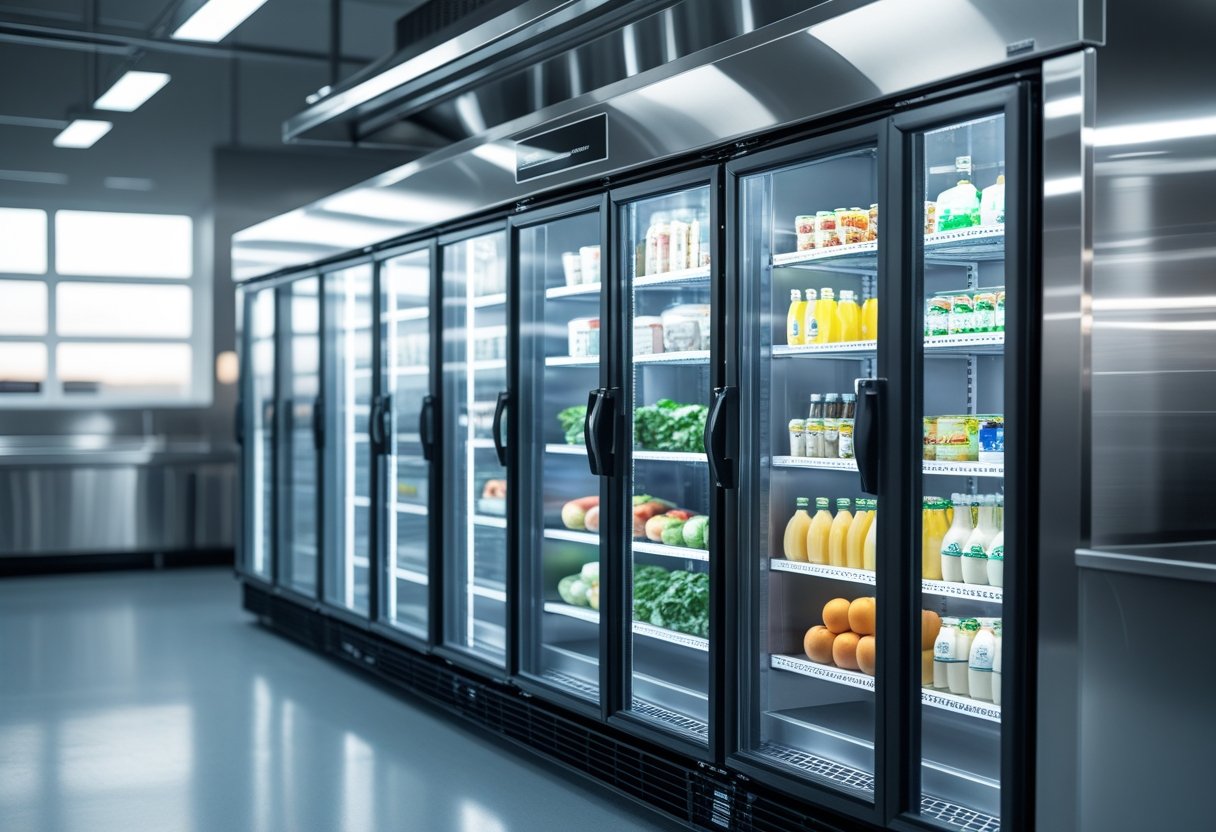
Memphis Commercial Refrigeration Experts Helping Your Business Stay Cool
